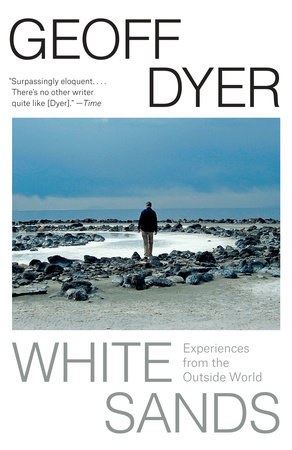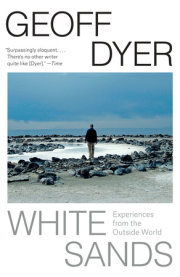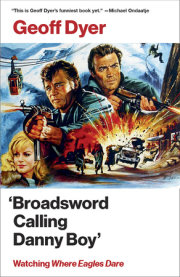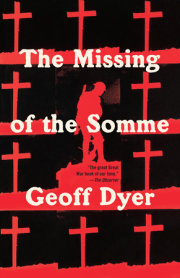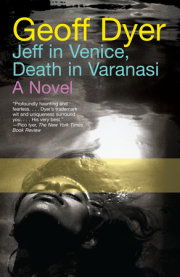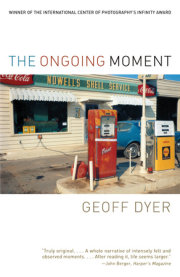Time in Space Maybe it is not the natives of Texas or Arizona who fully appreciate the scale of the places where they have grown up. Perhaps you have to be British, to come from ‘an island no bigger than a back garden’—in Lawrence’s contemptuous phrase—to grasp properly the immensity of the American West. So it’s not surprising that Lawrence considered New Mexico ‘the greatest experience from the outside world that I have ever had.’
The cramped paradox of English life: a tiny island that is often hard and sometimes impossible to get around. You can imagine a prospective visitor from Arizona studying a map of England and deciding, ‘Yep, we should be able to do this little puppy in a couple of days.’ But how long does it take to travel from Gloucester to Heathrow? Anything from two and a half hours to . . . Well, best to allow five to be on the safe side.
In the American West you can travel hundreds of miles and calculate your arrival time almost to the minute. We had turned up for our rendezvous in Quemado at one o’clock on the dot. From Quemado, Jessica and I drove 450 miles to Springdale, on the edge of Zion, in Utah. There were just two of us now, a husband-and-wife team, and we got to Springdale exactly on time for our dinner reservation. After a couple of nights in Zion we headed to the
Spiral Jetty.
Yes, the
Spiral Jetty—the wholly elusive grail of Land Art! Instantly iconic, it was transformed into legend by a double negative: the disappearance of the
Jetty a mere two years after it was created, followed, a year later, by the premature death of its creator, Robert Smithson. Water levels at the Great Salt Lake in northern Utah were unusually low when the Jetty was built in 1970. When the water returned to its normal depth the
Jetty went under. On 20 July 1973, Smithson was in a light aircraft, reconnoitering a work in progress in Amarillo, Texas. The plane ploughed into a hillside, killing everyone onboard: the pilot, a photographer, and the artist. Smithson was thirty-five. After the
Jetty sank and his plane crashed, Smithson’s reputation soared.
For a quarter of a century the
Spiral Jetty was all but invisible. There were amazing photographs of the coils of rock in the variously coloured water—reddish, pink, pale blue—and there was the Zapruder-inflected footage of its construction, but the
Jetty had gone the way of Atlantis, sinking beneath the waveless waves of the Salt Lake. Then, in 1999, a miracle occurred. Excalibur-like, it emerged from the lake. And not only that. The
Jetty was made out of earth and black lumps of basalt (six and a half thousand tonnes of it), but during the long interval of its submersion it had become covered in salt crystals. In newly resurrected form, it was pristine glittering white.
Even now, after this spectacular renaissance, the
Spiral Jetty is not always visible. If there is exceptionally heavy snowfall, then the thaw does for the lake what the globally heated polar ice pack threatens to do to the oceans. Once the snowmelt ends up in the lake, it can take months of drought and scorch to boil off the excess and leave the
Jetty high and dry again. Was it worth travelling all this way to see something we might not be able to see? Well, pilgrims continued to turn up even during the long years when there was
definitely nothing to see, so it seemed feeble not to give it a chance. (There is probably a sect of art-world extremists who maintain that the best time to have visited the
Spiral Jetty was during the years of its invisible submergence, when the experience became a pure manifestation of faith.)
We drove north towards Salt Lake City. No need for a compass. Everything screamed north: the grey-and-white mountains looming Canadianly in the distance, the weather deteriorating by the hour. Opting for directness instead of scenery, we barrelled up the featureless expanse of I-15. Most of what there was to see was traffic-related: gas-station logos, trucks the size of freight trains, snakeskin shreds of tire on the soft (‘hard’ in England) shoulder. Salt Lake City did its bit, its level best, coming to meet us well before we got anywhere near it—and not quite saying goodbye even when we thought we’d got beyond it.
With all the space out west there’s no incentive for cities
not to sprawl. In the case of Salt Lake City, mountains to the east and the lake to the west mean it does most of its sprawl along a north-south ribbon. Still, there was room for the interstate to gradually assume the width, frenzy—and, eventually, stagnation—of a Los Angeles freeway. Salt Lake City merged, imperceptibly, into Ogden, where we were staying. Not a bad place: fringed by Schloss Adler mountains in at least two directions and looking, on 25th Street at least, as if it was making a
Spiral Jetty–style comeback from a downturn in fortunes still afflicting other parts of town. Or maybe it was just the alpine winter, which, even in mid-May, had still not shot its wad. Trees weren’t convinced they’d got the all-clear; leaf-wise, none of them were venturing out.
###
Copyright © 2016 by Geoff Dyer. All rights reserved. No part of this excerpt may be reproduced or reprinted without permission in writing from the publisher.

